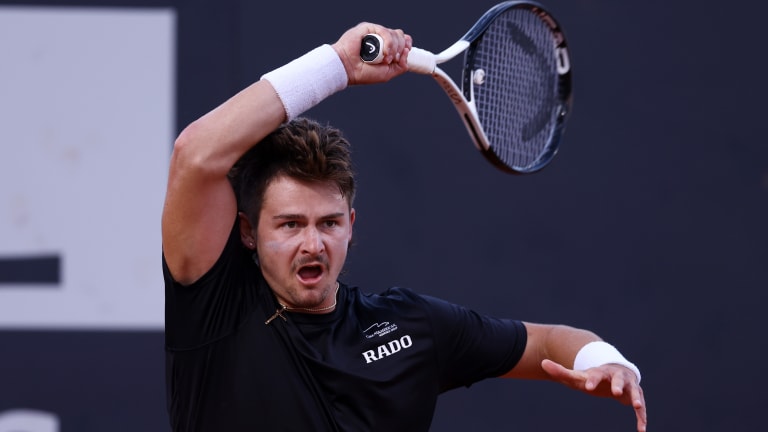Rome, Italy
J.J. Wolf emerges as intriguing clay-court prospect among American contingent in Rome
By May 13, 2023Rome, Italy
“I can dream again”: On Alexander Zverev’s Rome triumph and what awaits him in Paris
By May 19, 2024Rome, Italy
Alexander Zverev outdoes Nicolas Jarry to win second Rome title, sixth Masters 1000 crown
By May 19, 2024Rome, Italy
Iga Swiatek stands alone on the WTA after completing Madrid-Rome double
By May 18, 2024Rome, Italy
Rome ATP Final Preview: Alexander Zverev and Nicolas Jarry cap another surprising men’s week
By May 18, 2024Rome, Italy
Iga Swiatek defeats Aryna Sabalenka to win Rome and complete rare Madrid-Rome sweep
By May 18, 2024Rome, Italy
Rome: Nicolas Jarry seeks Chile's first Masters 1000 title in 25 years after edging Tommy Paul
By May 18, 2024Rome, Italy
Iga Swiatek vs. Aryna Sabalenka: What their Rome final could mean for their rivalry
By May 17, 2024Rome, Italy
Alexander Zverev returns to Rome final with comeback win over Alejandro Tabilo
By May 17, 2024Rome, Italy
Tommy Paul, Taylor Fritz lead American men in discovering (or rediscovering) the joys and secrets of tennis on red clay
By May 17, 2024J.J. Wolf emerges as intriguing clay-court prospect among American contingent in Rome
Wolf is yet to drop a set at the Internazionali BNL d'Italia, scoring a statement win over Hubert Hurkacz to find himself a win away from the fourth round.
Published May 13, 2023
Advertising
Advertising

Wolf is yet to drop a set in Rome, and scored his second Top 20 win over the season over Hurkacz on Saturday.
© Getty Images
Advertising

Wolf will next face either Alexander Zverev or David Goffin for a spot in the fourth round.
© Getty Images